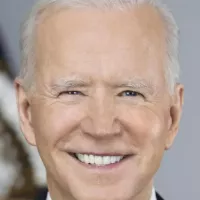Arizona is a landlocked state in the Southwestern U.S., part of the Four Corners with Colorado, New Mexico, and Utah. It borders Nevada, California, and Mexico (Sonora and Baja California). Phoenix is the capital and largest city. The state comprises 15 counties.
1900: Capitol building construction completed
The original Capitol building construction was completed in 1900 for $136,000.
1901: Capitol building dedicated
In 1901, the original Capitol building in Phoenix was dedicated when the area was a territory.
1907: Arizona becomes the Copper State
By 1907, Arizona produced more copper than any other state, earning it the nickname "the Copper State" at the time of statehood.
1910: Start of the Mexican Revolution
In 1910, the Mexican Revolution began, leading to battles in Mexican towns across the border from Arizona settlements.
1910: Arizona's Population in 1910
In 1910, the state population in Arizona was recorded as 294,353, according to the Arizona Blue Book.
February 14, 1912: Arizona achieves statehood
On February 14, 1912, Arizona became the 48th state and the last of the contiguous states to be admitted to the Union.
1912: Phoenix becomes the official state capital
In 1912, Phoenix became the official state capital with Arizona's admission to the union.
1912: Arizona Becomes a State
In 1912, the area that was formerly the Arizona Territory in 1863 became the State of Arizona.
1916: Pancho Villa's Columbus Raid
In 1916, Pancho Villa's Columbus Raid occurred in New Mexico, marking one of the two significant engagements on U.S. soil between U.S. and Mexican forces during the Mexican Revolution.
1917: Bisbee Deportation
In 1917, the Bisbee Deportation occurred as a result of a copper miners' strike, reflecting growing pains and labor disputes in the industry during the early years of Arizona's statehood.
1918: Battle of Ambos Nogales and End of American Indian Wars
In 1918, after Mexican federal troops fired on U.S. soldiers, the American garrison launched an assault into Nogales, Mexico and also in 1918, just west of Nogales, an Indian War battle occurred, considered the last engagement in the American Indian Wars.
1918: Battle of Ambos Nogales
In 1918, the Battle of Ambos Nogales took place in Arizona, representing another significant engagement on U.S. soil during the Mexican Revolution.
1920: Democratic candidate loses election
In 1920, the Democratic candidate for the presidency lost the election in Arizona.
1920: End of the Mexican Revolution
In 1920, the Mexican Revolution came to an end, during which many Arizonans had enlisted in various armies fighting in Mexico.
1924: Congress grants citizenship and suffrage to Native Americans
In 1924, Congress passed a law granting citizenship and suffrage to all Native Americans.
1924: Democratic candidate loses election
In 1924, the Democratic candidate for the presidency lost the election in Arizona.
1928: Democratic candidate loses election
In 1928, the Democratic candidate for the presidency lost the election in Arizona.
1929: Opening of the Arizona Biltmore Hotel
In 1929, the Arizona Biltmore Hotel opened in central Phoenix, becoming one of the upscale hotels and resorts that contributed to the development of tourism in Arizona.
1936: Opening of the Wigwam Resort
In 1936, the Wigwam Resort opened on the west side of the Phoenix area, joining other establishments in fostering the growth of tourism as an important industry in Arizona.
June 1942: Aleutian Islands Campaign
In June 1942, the Aleutian Islands Campaign materialized, leading to wartime fears of a Japanese invasion of the U.S. West Coast.
1945: Brewers Owner Veeck Sells Team
In 1945, Brewers owner Veeck sold the team.
1945: Abolishment of Japanese American internment camps
In 1945, after World War II, the Japanese American internment camps were abolished, allowing those who were forced to reside in these camps to return to their homes and businesses.
1946: Veeck Purchases the Cleveland Indians
In 1946, Brewers owner Veeck went on to purchase the Cleveland Indians.
1947: Spring Training in Arizona
Spring training first started in Arizona in 1947, when Veeck convinced the New York Giants to give Phoenix a try. Thus, the Cactus League was born.
1948: Harrison and Austin v. Laveen
In 1948, after Maricopa County did not allow Native Americans to register to vote, veteran Frank Harrison and Harry Austin of the Mojave-Apache Tribe brought a legal suit, Harrison and Austin v. Laveen, to challenge this exclusion, leading to a ruling in their favor by the Arizona Supreme Court.
1948: Arizona Supreme Court establishes rights of Native Americans to vote
In 1948, the Arizona Supreme Court overturned the interpretation prohibiting Native Americans living on reservations from voting, establishing their rights to vote in the state, in the landmark case Harrison and Austin v. Laveen.
1950: Elliott Carter composes String Quartet No. 1
In 1950, American composer Elliott Carter composed his first String Quartet while on sabbatical in Arizona. The quartet won a Pulitzer Prize and became a staple of the string quartet repertoire.
1951: Community Education Mandate
Since 1951, the Phoenix Art Museum has held a year-round program of festivals, live performances, independent art films, and educational programs as part of its community education mandate.
1952: Maricopa County voted Republican
Before 2020, Maricopa County had voted Republican in every presidential election since 1952.
1960: Establishment of Sun City
In 1960, Sun City, a retirement community developed by Del Webb, was established, catering exclusively to the needs of senior citizens and attracting retirees seeking to escape harsh winters.
1960: House of Representatives and Senate buildings dedicated
In 1960, the House of Representatives and Senate buildings were dedicated in Arizona.
1963: Lake Havasu City Founded
In 1963, Lake Havasu City was founded by real estate developer Robert P. McCulloch on the Colorado River.
1964: Barry Goldwater carried his home state
In 1964 Barry Goldwater carried his home state.
1964: Barry Goldwater ran for president
In 1964, Barry Goldwater ran for president.
1964: Lyndon Johnson lost to Barry Goldwater
In 1964, Democrat Lyndon Johnson lost the state by fewer than 5,000 votes to Arizona Senator and native Barry Goldwater.
1970: Arizona's Population in 1970
By 1970, Arizona's population had grown to 1,752,122, marking a significant increase over the decades.
January 7, 1971: Record Low Temperature in Hawley Lake
On January 7, 1971, Hawley Lake recorded the all-time record low temperature for Arizona at −40 °F (−40 °C).
1974: Release of "Carefree Highway"
In 1974, Gordon Lightfoot released the song "Carefree Highway", which takes its name from Arizona State Route 74 north of Phoenix.
1974: Executive Office Building dedicated
In 1974, an Executive Office Building was dedicated, housing the Office of the Governor on its ninth floor.
1974: Release of "Alice Doesn't Live Here Anymore"
In 1974, the film Alice Doesn't Live Here Anymore, starring Ellen Burstyn and Kris Kristofferson, was set in Tucson. Ellen Burstyn won the Academy Award for Best Actress for her role in the film.
1977: The Gauntlet Climax in Phoenix
In 1977, the climax of the Clint Eastwood film The Gauntlet takes place in downtown Phoenix.
1977: Secretaries of state and attorney general succeeded to governorship
Since 1977, four secretaries of state and one attorney general have succeeded to the state's governorship in Arizona.
1984: Starman Filmed at Meteor Crater
In 1984, the final segments of the film Starman take place at Meteor Crater outside Winslow, Arizona.
1991: Population Increase in Metropolitan Phoenix
From 1991, the population of metropolitan Phoenix increased by 45%.
1992: Clinton lost the election
In 1992, Bill Clinton came within less than two percent of winning Arizona's electoral votes.
1992: Arizona voted Republican
Until 1992 Arizona voted Republican in every presidential election.
1993: Republican Party in power
Since 1993, the Republican Party has held power in both houses of the Arizona legislature.
June 29, 1994: Record High Temperature in Lake Havasu City
On June 29, 1994, Lake Havasu City recorded a temperature of 128 °F (53 °C), marking Arizona's all-time record high.
March 9, 1995: Arizona Awarded Franchise
On March 9, 1995, Arizona was awarded a franchise to begin to play for the 1998 season.
1996: Bill Clinton won Arizona
In 1996, Democrat Bill Clinton won Arizona by a little over two percentage points.
1996: Amtrak service lost in Phoenix
In 1996, Phoenix lost Amtrak service due to the rerouting of the Sunset Limited, and now an Amtrak bus runs between Phoenix and the station in Maricopa.
1996: Comparison Point for Voter Turnout
In the 2000 Arizona Democratic Primary, voter turnout increased more than 500% over the 1996 primary.
January 16, 1997: Diamondbacks Voted Into National League
On January 16, 1997, the Diamondbacks were officially voted into the National League.
1998: Inaugural Season for Arizona Franchise
1998 was the beginning for Arizona's team franchise to play.
1998: Women elected to all five top statewide offices
In 1998, Arizona elected women to all five top, statewide elected offices.
March 2000: Arizona Democratic Primary
In March 2000, Arizona held the first legally binding election over the internet, where Al Gore defeated Bill Bradley in the Arizona Democratic Primary.
2000: Religious Denominations in Arizona
According to a study, the fifteen largest denominations by number of adherents in 2000 were recorded.
2000: Republican presidential candidates
From 2000, the majority of the state continued to support Republican presidential candidates by solid margins.
2001: Diamondbacks Win World Series
Since their debut, the Diamondbacks have won five National League West titles, two National League Championship pennants, and in 2001, the World Series.
2001: Population Increase in Metropolitan Phoenix
Through 2001, the population of metropolitan Phoenix increased by 45%, contributing to Arizona becoming the second fastest-growing state in the U.S. in the 1990s.
2002: Rodeo–Chediski Fire
In 2002, the Rodeo–Chediski Fire occurred in the area of the Mogollon Rim, becoming the worst fire in Arizona's state history until 2011.
2002: Legislature Transfers Oversight Authority
In 2002, the state legislature of Arizona transferred almost all oversight authority of the two-year vocational schools and community colleges to individual community college districts.
2004: Q biotype of whitefly found
In 2004, the Q biotype of the whitefly Bemisia tabaci (from the Mediterranean) was first found in Arizona, also on poinsettia.
2004: Proposition 200
In 2004, voters in Arizona passed Proposition 200, requiring proof of citizenship to register to vote.
2005: Native American Language Speakers in Arizona
In 2005, Arizona had the largest number of speakers of Native American languages in the contiguous 48 states, with more than 85,000 individuals speaking Navajo and 10,403 people speaking Apache at home.
2005: School District Redistricting Commission established
In 2005, a School District Redistricting Commission was established in Arizona to combine and consolidate many school districts.
2006: Arizona rejected same-sex marriage ban
In 2006, Arizona initially rejected a same-sex marriage ban.
July 5, 2007: Record High Temperature in Lake Havasu City
On July 5, 2007, Lake Havasu City matched the state's all-time record high temperature of 128 °F (53 °C).
2007: Jordin Sparks Wins American Idol
In 2007, Jordin Sparks, a notable singer from Arizona, won the American Idol competition.
2007: BCS National Championship Game
In 2007, the University of Phoenix Stadium hosted the BCS National Championship Game.
March 4, 2008: John McCain clinched the Republican nomination
On March 4, 2008, Senator John McCain effectively clinched the Republican nomination for 2008, becoming the first major party presidential nominee from the state since Barry Goldwater in 1964.
December 2008: Valley Metro Rail completed
In December 2008, the Valley Metro Rail system was completed, connecting Central Phoenix with Mesa and Tempe.
2009: Emergence of Desert Rock Scene
Around 2009, Phoenix began to host a burgeoning desert rock and sludge metal underground, led by bands like Wolves of Winter, Asimov, and Dead Canyon.
2009: Jan Brewer assumes office
In 2009, Jan Brewer assumed office as Governor of Arizona after Janet Napolitano was confirmed as Secretary of Homeland Security.
2010: Religious Denominations in Arizona
According to a study, the fifteen largest denominations by number of adherents in 2010 were recorded.
2010: Arizona Population
According to the 2010 United States census, Arizona had a population of 6,392,017 and in 2010, illegal immigrants constituted an estimated 8% of the population.
2010: Largest Native American tribes
According to the 2010 census, the largest Native American tribes in Arizona were listed.
2010: Languages Spoken in Arizona Homes
As of 2010, 73% of Arizona residents age five and older spoke only English at home, while 21% spoke Spanish, 2% Navajo, and smaller percentages spoke other languages such as German, Chinese, Tagalog, Vietnamese, and French.
2010: Population Distribution in Arizona
As of the 2010 census, approximately five-sixths of Arizona's people resided in metropolitan Phoenix (4.7 million) and Tucson (1.0 million).
2010: 2010 United States Census
Compared to the 2010 United States census, the 2020 census shows a 12% increase in Arizona's population.
2010: Arizona adopted SB 1070
In 2010, Arizona adopted SB 1070, referred to as the "toughest immigration law" in the United States, which led to a fierce debate.
2010: Enactment of SB 1070
In 2010, Arizona enacted SB 1070, requiring all immigrants to carry immigration papers at all times.
2010: Arizona gained a ninth seat
In 2010, Arizona gained a ninth seat in the House of Representatives due to redistricting based on the 2010 United States census.
2010: Hinduism becomes largest non-Christian religion
In 2010, Hinduism became the largest non-Christian religion in Arizona, with over 32,000 adherents. Judaism followed with more than 20,000 adherents and Buddhism with over 19,000 adherents.
January 8, 2011: Shooting of Gabby Giffords
On January 8, 2011, a gunman shot congresswoman Gabby Giffords and 18 others at a gathering in Tucson, sparking national attention regarding incendiary political rhetoric.
2011: Demographic Shift in Arizona
As of 2011, 61% of Arizona's children under age one belonged to racial groups of color, indicating a demographic shift in the state.
2011: Record fire in state history
As of 2011, the Rodeo-Chediski Fire from 2002 was the worst fire in state history
2011: BCS National Championship Game
In 2011, the University of Phoenix Stadium also hosted the BCS National Championship Game.
2012: Invalidation of Parts of SB 1070
In 2012, the Supreme Court invalidated parts of Arizona's SB 1070 in the case Arizona v. United States.
2013: Supreme Court Strikes Down Citizenship Requirement
In 2013, the Supreme Court of the United States struck down the proof of citizenship requirement for voter registration introduced by Proposition 200.
July 2014: Sun Link streetcar launched
In July 2014, the Sun Link streetcar system in Tucson, based on the Portland Streetcar, launched, connecting the University of Arizona campus with Mercado San Agustin.
October 2014: Arizona's Attorney General stopped objecting to same-sex marriage
Following a federal district court ruling in October 2014, Arizona's Attorney General stopped objecting to same-sex marriage, making Arizona the 31st state to legalize it.
2014: Pew Research Center's study
In 2014, according to the Pew Research Center, 67% of Arizona's population identified as Christian.
2016: Largest private employer
As of 2016, Banner Health was the largest private employer in Arizona, with over 39,000 employees.
2016: Republican presidential candidates
Until 2016, the majority of the state continued to support Republican presidential candidates by solid margins.
2017: NCAA Final Four
In 2017, State Farm Stadium hosted the Final Four of the NCAA Division I men's basketball tournament.
2018: West Virginia teachers' strike inspired teachers
In 2018, the West Virginia teachers' strike inspired teachers in other states, including Arizona, to take similar action.
2019: Largest private employers
According to The Arizona Republic, in 2019, the largest private employers in the state were determined.
December 2020: ProPublica and Rhodium Group Study
In December 2020, a study released by ProPublica and Rhodium Group cautioned that climate change could make six of Arizona's 15 counties uninhabitable for humans by the years 2040–2060.
2020: Public Religion Research Institute's study
In 2020, a study by the Public Religion Research Institute indicated that 68% of Arizona's population identified as Christian.
2020: Religion Data Archives Study
In 2020, the Association of Religion Data Archives also determined Christianity to be the most prevalent religion in Arizona, with 1,522,410 Catholic adherents and 402,842 non-denominational Christians.
2020: Joe Biden broke the streak
In the 2020 United States presidential election, Joe Biden became the first Democratic presidential candidate to win Arizona since 1996.
2020: 2020 United States Census
In the 2020 census, the United States Census Bureau recorded Arizona's population as 7,151,502, a 12% increase since the 2010 United States census.
2021: Amtrak proposes to restore rail service
As of 2021, Amtrak has proposed to restore rail service between Phoenix and Tucson.
2021: Legislative seats picked up by Democratic Party
As of 2021, the Democratic Party had picked up several legislative seats in recent elections, bringing both chambers one seat away from being equally divided.
November 8, 2022: Arizona voters approve lieutenant governor position
On November 8, 2022, Arizona voters approved a state constitutional amendment (Proposition 131) that created the position and office of the lieutenant governor beginning with the 2026 elections.
2022: Homeless Population in Arizona
According to HUD's 2022 Annual Homeless Assessment Report, there were an estimated 13,553 homeless people living in Arizona.
2022: Largest Ancestry Groups in Arizona
As of 2022, a record of largest ancestry groups in Arizona was taken.
2022: Irreligious population survey
From 2014 to 2022, surveys indicated that the irreligious or agnostic population in Arizona ranged from 24% to 31%.
February 12, 2023: Super Bowl LVII in Arizona
On February 12, 2023, Arizona hosted Super Bowl LVII at State Farm Stadium.
2023: Public opinion support for same-sex marriage
2023 polling showed overwhelming support for same-sex marriage among Arizonans.
2023: Arizona's per capita income
In 2023, Arizona's per capita income was $61,652, ranking 33rd in the U.S., while the median household income was $74,568, ranking 19th.
2023: Arizona's Gross State Product
In 2023, Arizona's total gross state product was $508 billion, with health care, transportation, and government being the largest sectors.
2024: Arizona voters passed a constitutional amendment
In 2024, Arizona voters passed a constitutional amendment recognizing abortion access within the Arizona state constitution, becoming the southernmost continental state to codify abortion rights.
2024: NCAA Final Four
In 2024, State Farm Stadium is scheduled to host the Final Four of the NCAA Division I men's basketball tournament again.
2024: $545,134,615.38 Compensation to Mexico
In 2024, the 1848 compensation of $15 million to the Republic of Mexico, as part of the Treaty of Guadalupe Hidalgo, is equivalent to $545,134,615.38.
2024: Donald Trump won Maricopa County
In the 2024 General Election, former president Donald Trump won Maricopa County by 71,515 votes and won the state of Arizona by 187,382 votes.
April 2025: Arizona's unemployment rate
As of April 2025, Arizona's unemployment rate was 4.1%.
2026: Lieutenant governor position begins
The position of lieutenant governor will begin in 2026. It will be elected on a joint ticket with the governor and ascend to the governorship if the incumbent governor dies, resigns, or is removed from office.
2040: Possible Uninhabitable Conditions
According to a study released in December 2020, six of Arizona's 15 counties may become uninhabitable for humans by 2040 due to climate change.
2060: Possible Uninhabitable Conditions
According to a study released in December 2020, six of Arizona's 15 counties may become uninhabitable for humans by 2060 due to climate change.
Mentioned in this timeline

Basketball is a team sport played on a rectangular court...

Bill Clinton the nd U S President - served as...

Joe Biden a member of the Democratic Party served as...
India officially the Republic of India is a South Asian...

Clint Eastwood is an iconic American actor and film director...
American Idol is a singing competition TV series created by...
Trending
8 months ago Maldives bans Israelis in solidarity with Palestinians amid Gaza conflict escalation.

3 months ago Brock Bowers' Injury Concerns: Raiders' Crosby Also Added to Injury Report

2 months ago Edison Upgrades South Pasadena Electrical Grid Amidst Storm Recovery, Lifting Evacuation Orders

John Stamos is an American actor and musician who rose to fame as Blackie Parrish on General Hospital earning a...

8 months ago Austin Hays emerges as a top Fantasy Baseball Waiver Wire pickup.

1 month ago Maxxine Dupri, assisted by AJ Lee, dethrones Becky Lynch for Intercontinental Title on Raw!
Popular

Tucker Carlson is an American conservative political commentator known for...

XXXTentacion born Jahseh Dwayne Ricardo Onfroy was a controversial yet...

Ben Shapiro is a prominent American conservative political commentator media...

Candace Owens is an American conservative political commentator and author...

William Franklin Graham III commonly known as Franklin Graham is...

Ursula Gertrud von der Leyen is a prominent German politician...